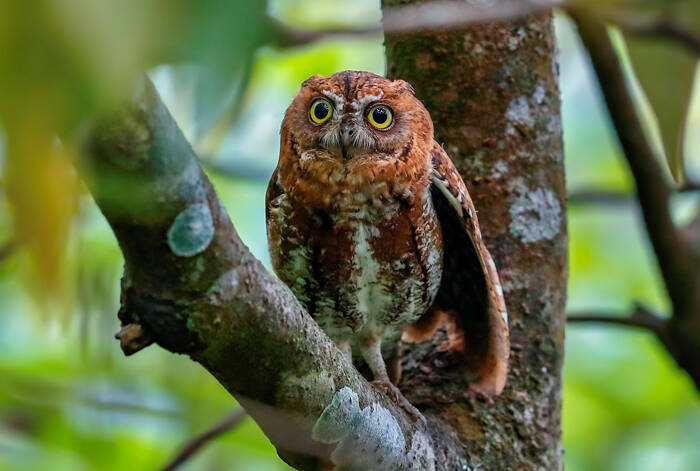Otus sunia
IUCN
LCBasic Information
Scientific classification
- name:Otus sunia
- Scientific Name:Otus sunia,Oriental Scops-owl,Common horned owl, Eastern owl
- Outline:Raptor
- Family:Strigiformes Owl
Vital signs
- length:17-21cm
- Weight:75-95g
- lifetime:About 10-15 years
Feature
The upper body is gray-brown (sometimes brown-chestnut), with dark brown fine lines like insects
Distribution and Habitat
Resident: Myanmar, Singapore, Sri Lanka and Vietnam.
Breeding: Bangladesh, Cambodia, China, India, Japan, North Korea, South Korea, Laos, Nepal, Pakistan, Russia (East Asia) and Thailand.
Non-breeding: Indonesia, Malaysia and Taiwan Island, China.
Wandering: Beihai Haibo National Wetland Park, Guangxi, China, Hong Kong, China and the United States.
Origin uncertain (breeding): Bhutan.
Inhabits open and semi-open woodlands, parks, savannas and wooded riverside areas. The living altitude is from sea level to 1500 meters. This owl prefers to hunt at the edge of the forest or in open areas.
Appearance
The upper body is reddish brown with dark brown beetle-like fine lines. There are dark stripes on the forehead and crown. The shoulder blades have white buff spots with black edges. The face plate is light reddish brown, densely covered with fine black lines, and the edges are black. Eyebrows white. The collar is black and white, and the back of the neck has a vague reddish brown color. The base of the ear feathers is brown; the top of the head to the back and wing coverts are mixed with brown and white spots. Most of the flight feathers are dark brown, the tail feathers are grey-brown, and the lower tail coverts are white. The wings and tail have black and pale stripes. Most of the lower body is reddish brown to gray brown, and the abdomen turns light yellow. The feathers on the neck and chest have dark brown feather shaft lines with thin dark brown horizontal spots, showing a faint "herringbone" pattern.
The iris is yellow, the mouth is black and gray, surrounded by whit
Details
The Oriental Scops-owl is a small bird of prey with 9 subspecies.

The horned owl builds nests in tree holes, wall holes and other depressions to breed and raise offspring, and can generally raise 4-6 chicks in one breeding season. The breeding season in the Indian subcontinent is from February to May. During courtship, males and females will sing in duets. The male first sings near potential nesting sites, which are usually trees or wall holes. This species also uses nest boxes. They call by entering the hole and singing at the entrance. The female lays 3-4 white eggs per nest, which are placed on the ground of the nest. The female incubates alone, while the male provides food.
The global population size of the horned owl has not been quantified, but the species is reported to be regionally abundant (delHoyo et al., 1999), and global population estimates include: in China, about 10,000-100,000 breeding pairs and about 1,000-10,000 migratory individuals; in Taiwan, the migratory population averages less than 1,000; in Korea, the migratory population averages 100-100,000 breeding pairs and 50-10,000 individuals; in Japan, about 100-100,000 breeding pairs and about 50-10,000 individuals in migration; in Russia, about 100-10,000 breeding pairs and about 50-1,000 individuals in migration (2009). Trend reason: The population is suspected to be stable without any evidence of decline or major threats.
Listed in the IUCN Red List of Threatened Species in 2016 ver3.1 - Least Concern (LC).
Listed in Appendix I, II and III of the Convention on International Trade in Endangered Species of Wild Fauna and Flora (CITES) 2019 Edition Appendix II.
Listed in China's National Key Protected Wildlife List (February 5, 2021) Level II.
Protect wild animals and stop eating game.
Maintaining ecological balance is everyone's responsibility!








